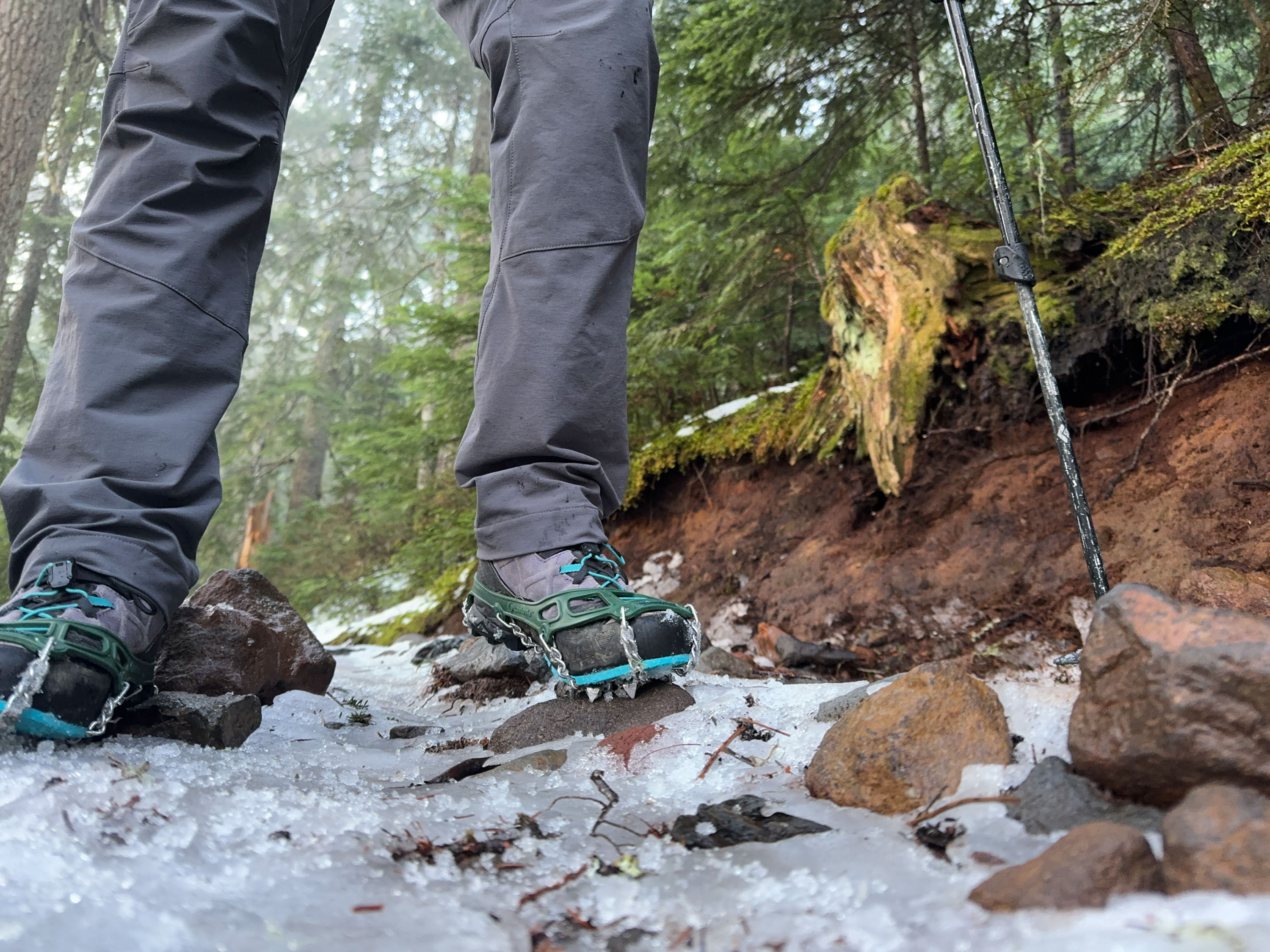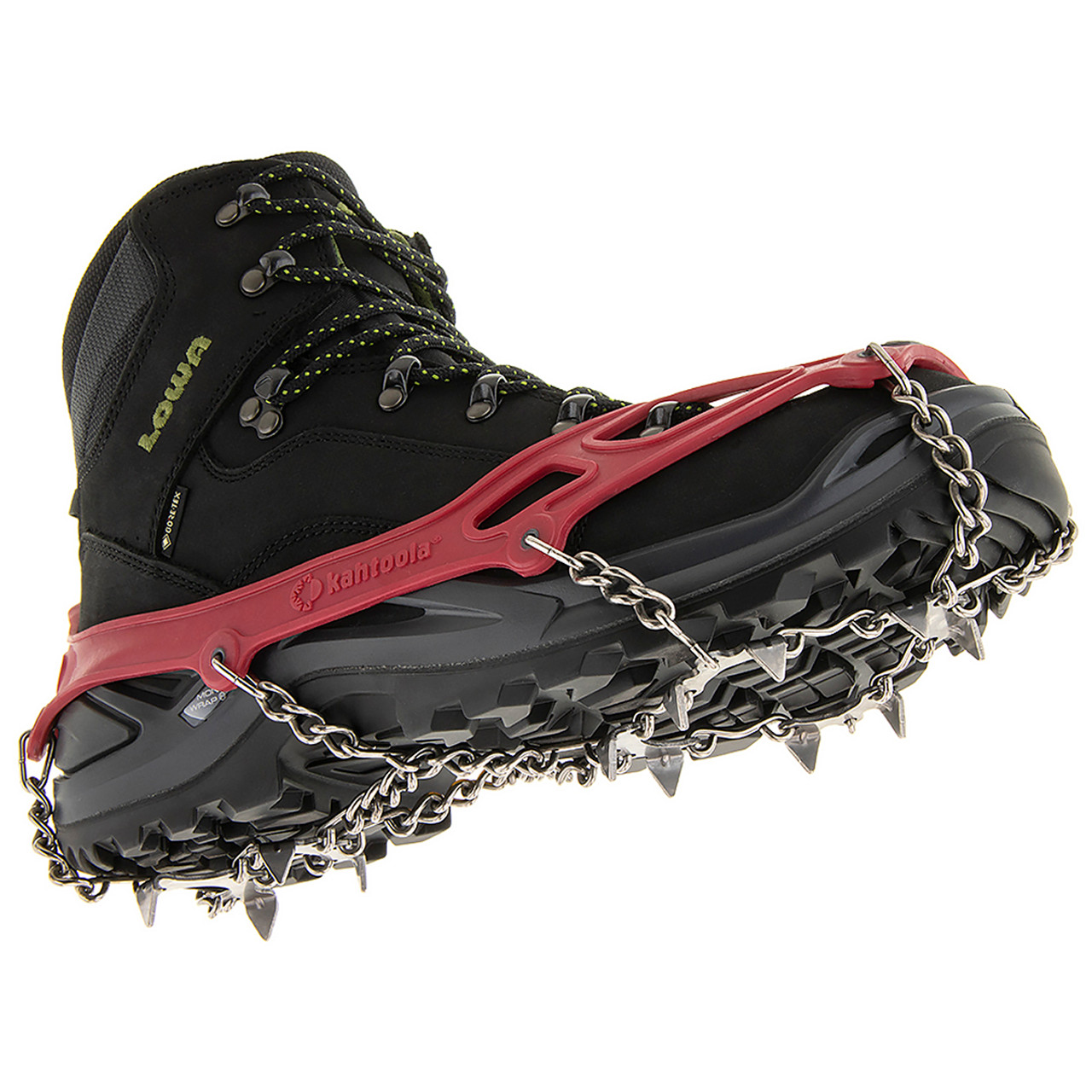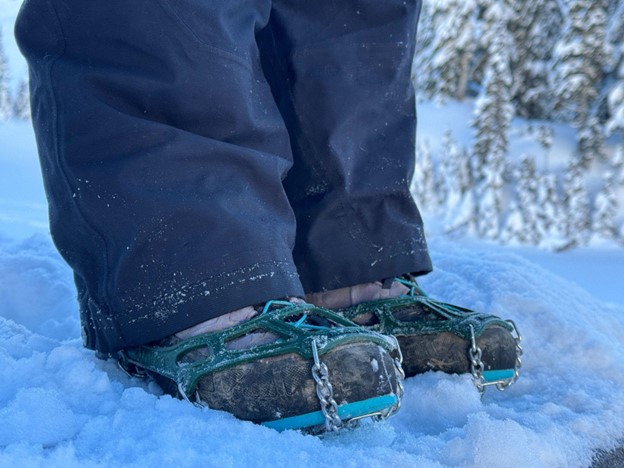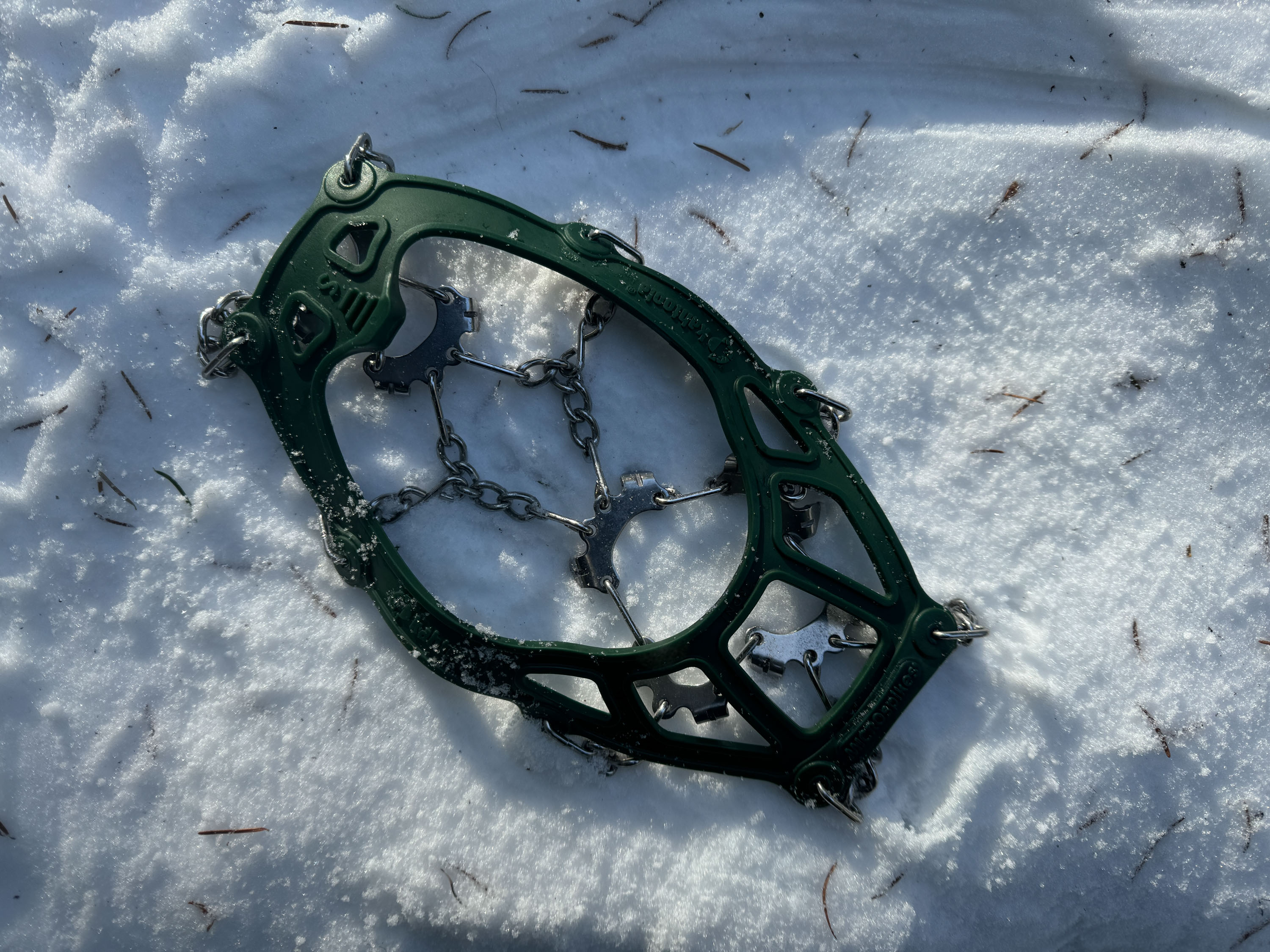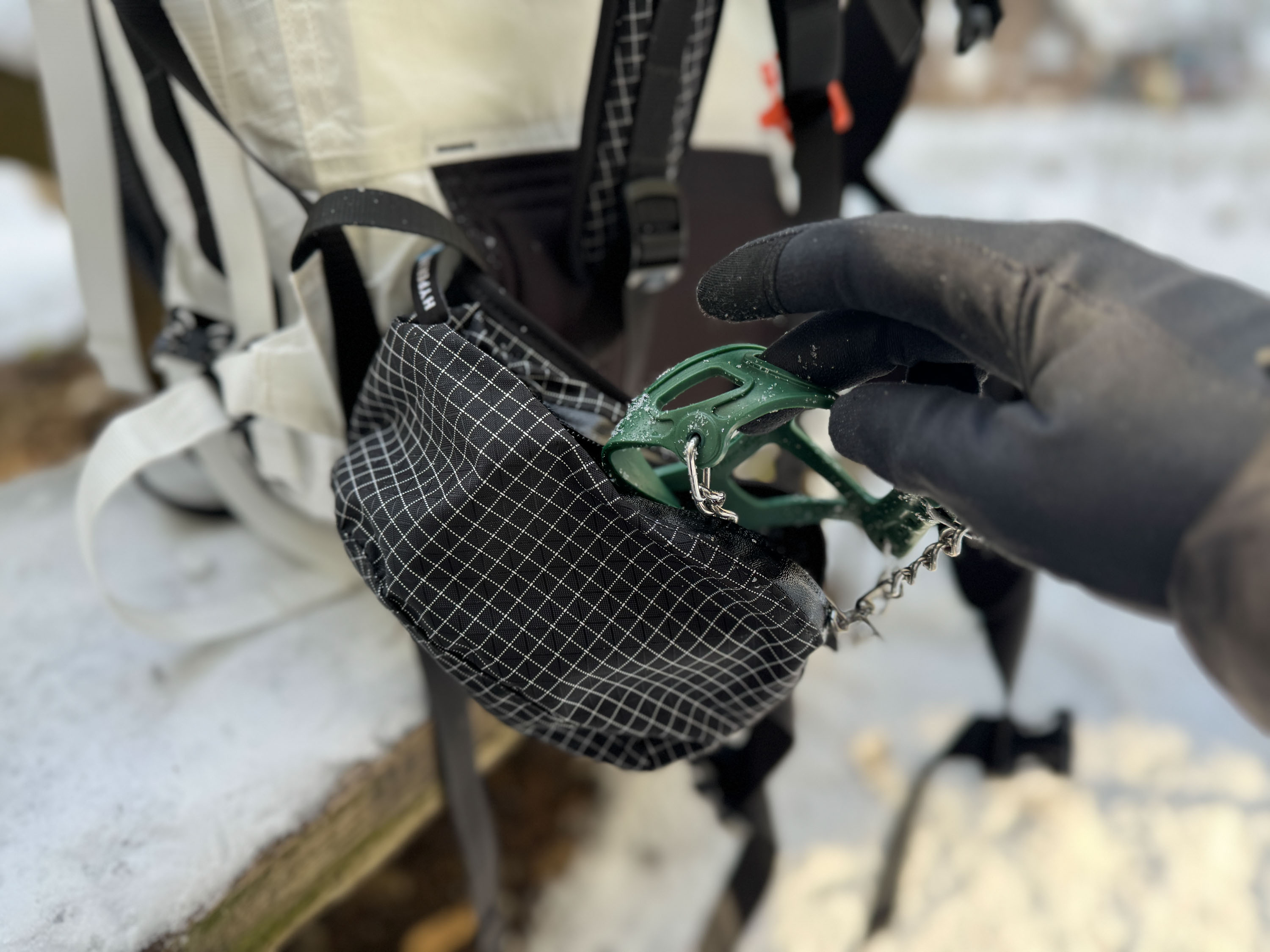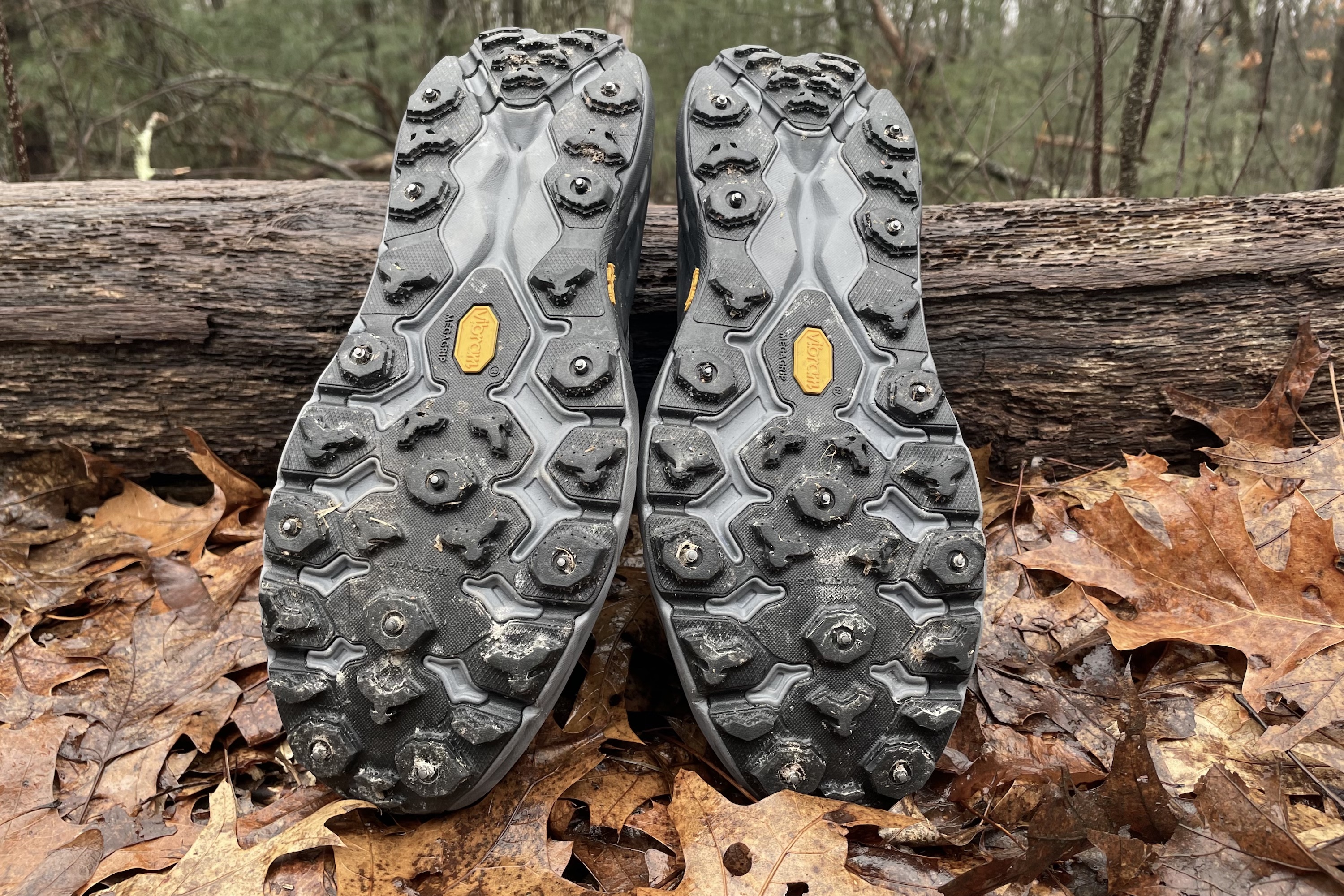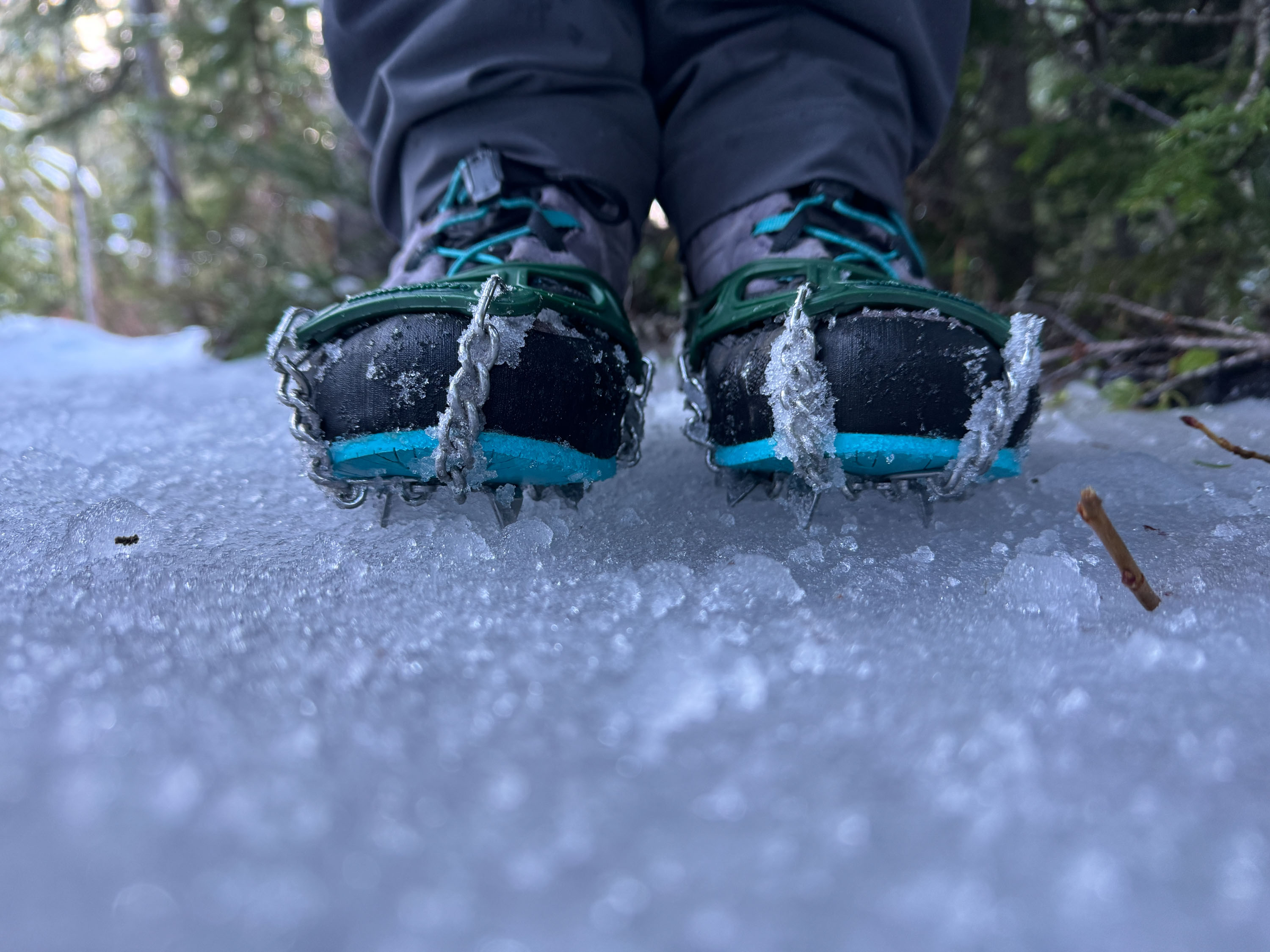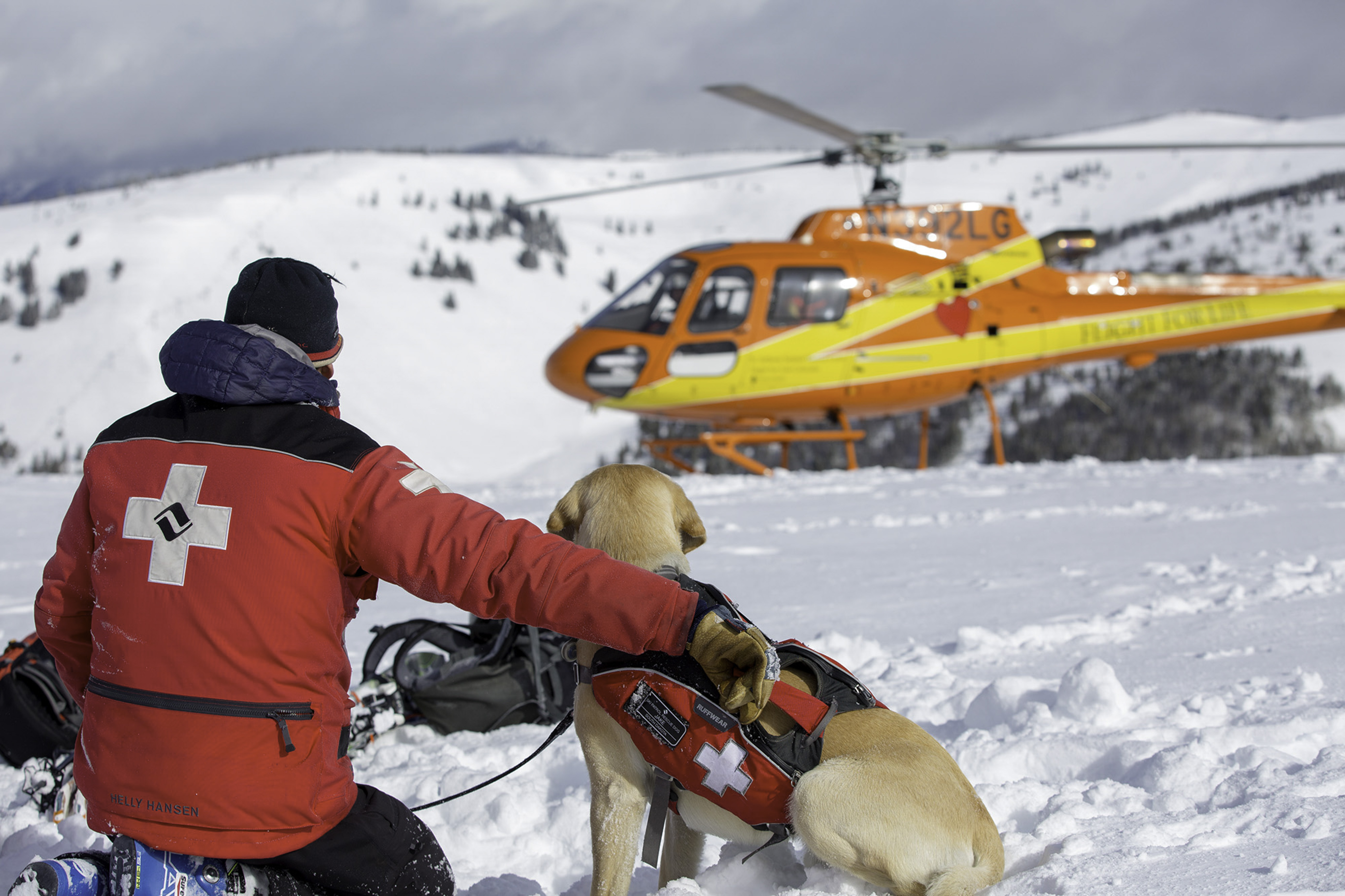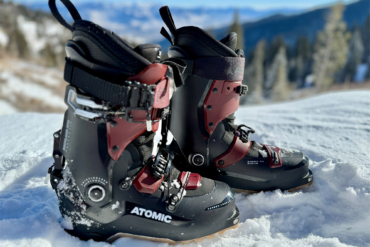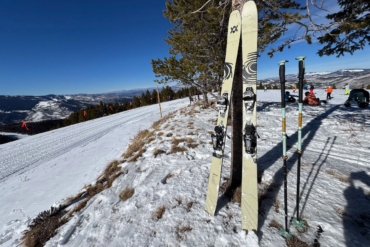The sub-alpine trails of the North Cascades are notorious for laminating in thick ice by midwinter. I’ve tiptoed and tumbled my way over these glacial-melt Slip ‘N Slides in many a pair of mountain boots, but none have given me the underfoot confidence that the Kahtoola MICROspikes do. Listen — you can hear the way this big-bite traction device chews straight into ice. That crunch is music to my ears, as well as to my joints and backside!
Finding a traction device I can trust to keep me upright on icy trails has changed my winter hiking game. Throughout this winter, these spikes have carried me safely over terrain I would normally avoid: devilishly steep and slick trails, treacherous ski resort parking lots, and, of course, those hair-raising frozen creek crossings.
You don’t need to admit you’re afraid of slipping to grab a pair. If you’re a year-round hiker looking to move more efficiently over icy trails and get more out of those short winter days, the MICROspikes are for you. Personally, I found myself reaching for these microspikes when preparing for any hike this winter, whether I knew I was going to need them or not.
In short: The Kahtoola MICROspikes are a big-bite traction device that will chew straight into icy ground, giving you the confidence to move efficiently through even the slipperiest of winter trails. Their design is versatile — they’ll fit over your running shoes and your hiking boots — and durable, ensuring bang for your buck winter after winter.
- Weight per pair: 11 oz. (medium)
- Traction: Twelve stainless steel spikes
- Harness: Thermoplastic elastomer harness
- Best for: All-around winter traction use; ski-area parking lots; winter hiking trails
Pros
- Performs well over icy and mixed terrain
- Fits over diverse footwear
- Harness design keeps spikes in place
- Extremely durable
- Easy to put on
Cons
- Doesn’t grip well in mud and slush
- Heavier than other brands
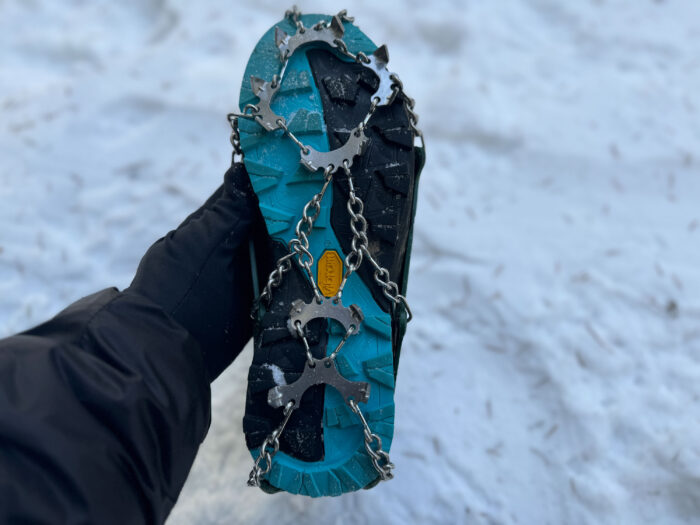
Kahtoola MICROspikes: Review
First Impressions
It’s likely that when you think of microspikes, you’re already thinking of the Kahtoola MICROspikes. This iconic winter traction device is outfitted with 12 stainless steel spikes and a flexible plastic harness. Though that’s reducing them to their basic elements — in reality, I found that the MICROspikes have a lot more going for them.
First off, and perhaps most importantly, these 12 spikes are not just stainless steel triangles, but 3/8th-inch-long shoe-daggers. Eight of those spikes are located on the forefront of the foot where hikers need them most, and the other four are on the heel for added stability.
These spikes are equipped with burly chains and a thermoplastic elastomer (it’s stretchy, folks) harness that attaches them to your boots. This harness has an integrated toe bail that keeps the harness from shifting, and a raised heel tab in the back that makes them easy to toss on at the trailhead.
The design is unapologetically simple — Kahtoola puts more emphasis on durability and performance than bells and whistles. I put this modest spike design to the test on several hikes this winter and found they kept me upright on almost any kind of slick terrain I came across.
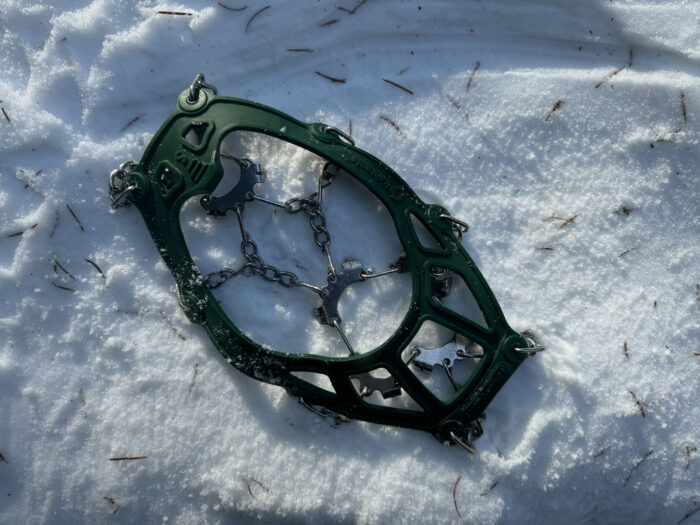
The Big Bite
Though my adoration of the MICROspikes is already clear, let’s get down to the nitty-gritty of how they performed on the trail. Throughout this winter, these spikes joined me on many exploits: from icy ski hill parking lots to steep after-storm hikes in the shadowy forests, from frozen glacial creek crossings to a ski packing trip I didn’t anticipate needing them on.
Ice
In a list of terrain where the MICROspikes perform best, ice is certainly at the top. Hike after hike, I was continually impressed with the way those stainless steel teeth chomp straight into frozen ground.
In this newest design, Kahtoola added two more spikes to the heel, giving users some extra stability on the back end. I certainly appreciated the extra confidence as I navigated complicated creek crossings in the low-lit PNW forests.
I found that the spikes at the front were especially helpful on the steeper sections of the trail, both on the up and downhill. While hoofing it up one of the many infamously steep hikes near Mount Baker, I found myself powering through steep icy sections I would normally dodge.
I also used these spikes to navigate the Mount Baker Ski Area parking lot one frigid morning, and I wasn’t surprised to see they gripped the hard-packed snow with ease. Taking 2 extra minutes to toss these before heading to the lodge saved me from a painful and embarrassing fall.
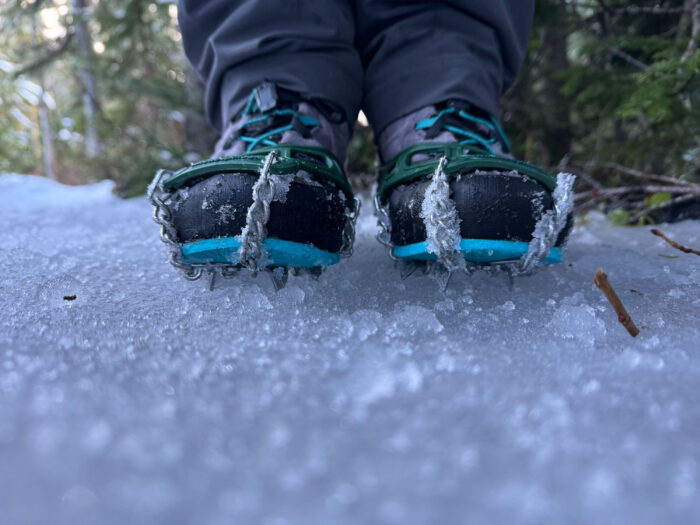
Mixed Ground
Unless you’re traversing a frozen lake, it’s not likely that you’ll come across pure ice on your winter adventure. While the Kahtoola MICROspikes won’t chew through stone, I did find them helpful when crossing mixed terrain. Rocks, roots, creek beds, and concrete were really no issue for these spikes.
However, I was most impressed with the MICROspikes on a ski-touring trip near Hidden Lakes Lookout. I wasn’t planning on using them on this trip, but as soon as I laid eyes on the glossy below-snowline trail, I was relieved I packed them. I found them necessary to power through the ice efficiently, especially with a heavy pack.
Where I didn’t find the MICROspikes especially helpful, however, was in heavy slush and mud. With little to bite into, those spikes were no match for the soggy terrain, and I likely would have been better off in a boot with prominent lugs. I didn’t mind keeping the spikes on, but I did have to give them a good rise when I got home. Safe to say, stick to the slick stuff if you want these spikes to do the most for you.
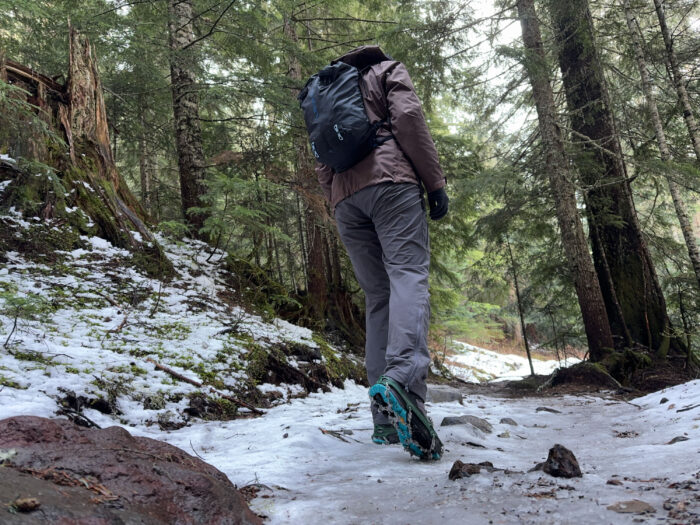
Saddling Up
A microspike’s fit is just as important as its grip, and luckily, I have nothing but positive things to say about the fit of the Kahtoola MICROspikes.
In this newest design, Kahtoola traded its old harness material for that thermoplastic elastometer band. This material is more lightweight and easier to use than the previous design. With no extra attachments, securing them to your boot is as easy as sticking your toe in the front of the harness and pulling it over your heel.
Kahtoola also added an integrated toebail to this harness that keeps the front of your boot from pushing through the harness. The ridges on the pull tab at the back of the harness also make it easier to pull over your heel, which I appreciated when wearing gloves in the extra-cold temps.
Kahtoola has two sizing guides for the MICROspikes: one for your normal hiking shoe or boot, and one for a bigger insulated boot. These guides range from small to extra large — for men, that’s size 5 to 14, and for women, size 6 to 12. For long-term durability and proper performance, sizing these spikes for the footwear you use most often is important.
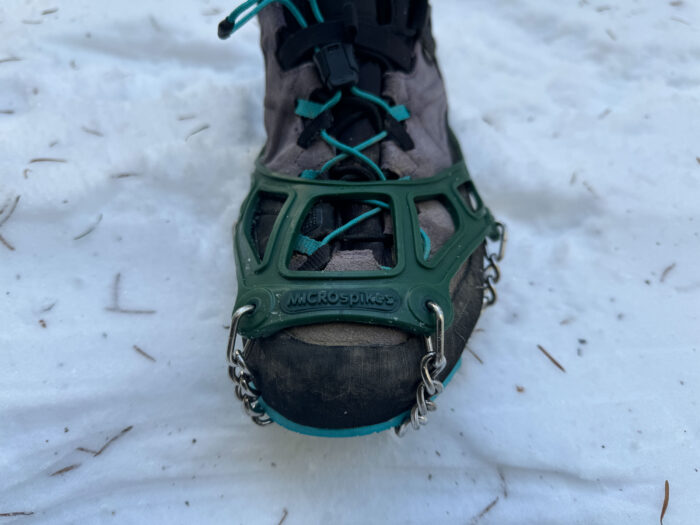
The Versatility!
However, one of the best perks of the MICROspikes is their ability to adapt to different shoe types and sizes. I was happy to find that my small pair were able to fit over almost any type of hiking footwear I could pull out of my closet.
On most hikes, I wore these spikes with a pair of noninsulated hiking boots, but they also fit over my pair of wide-toebox Altra running shoes. Though other spikes, like the Kahtoola NANOspikes, are specifically designed to fit over soft running shoes, I still found the MICROspikes comfortable on short jaunts.
However, I was most excited when I was able to pull these spikes over my ski boots. It certainly was harder to pull them over the thick boots, and for the long-term durability of the harness, I wouldn’t recommend doing so often. Nonetheless, it’s nice to know they’ll fit over a big boot in a pinch.
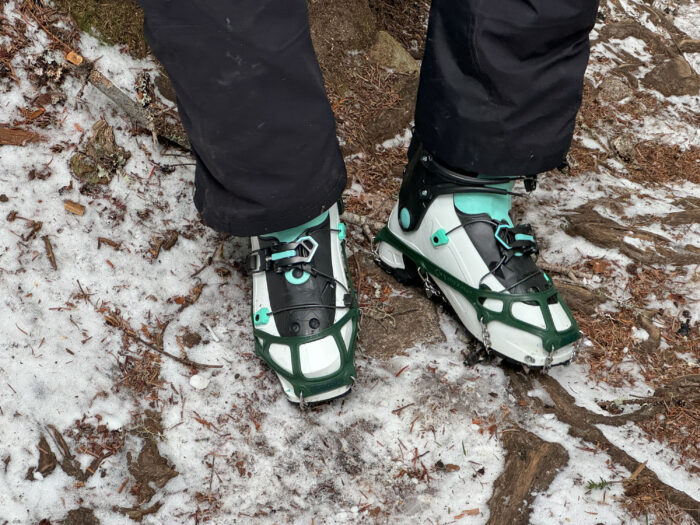
Weight and Bulk
The MICROspikes aren’t considered fast and light by ultralight standards. In fact, dedicated lightweight microspikes, like the Black Diamond Distance Spikes at 3.9 ounces per device, are quite a bit lighter than this pair. However, I can’t say that discouraged me from bringing them along.
Packing these spikes is like carrying the weight of two grapefruits, though I promise they pack down easier. I personally found it helpful to toss them in the hip pockets of my pack for easy access. Their flexible rubber makes it easy to bundle and shove wherever you need them to go.
If you’re an ultralight fanatic, you’ll have to decide what you prioritize more: weight or long-term durability. In our comparison of the two, the Distance Spikes were far less durable. I personally don’t mind adding the MICROspikes’ 22 combined ounces to my backpacking setup simply to know that they won’t break on me when I need them most.
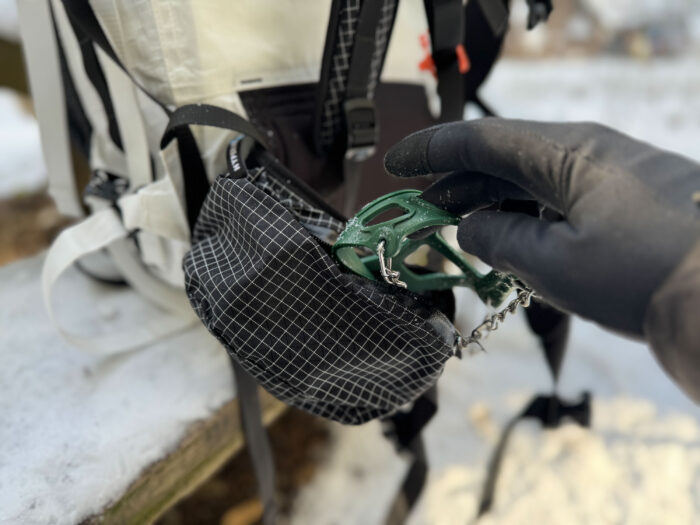
Made to Hammer On
These spikes are as durable as they look, and trust me, I tried to beat them up. Putting the MICROspikes to the durability test meant I didn’t want to waste my time trying to skirt around rocks — instead, I took these spikes for a test drive right over them.
But despite the rocks, tough ice, and parking lot concrete I tread on, these spikes still perform like new. All of the hardware — spikes and chains — are unbent and unbroken, though slightly scratched. All in all, they’re ready to be whipped out again at the next sign of snow.
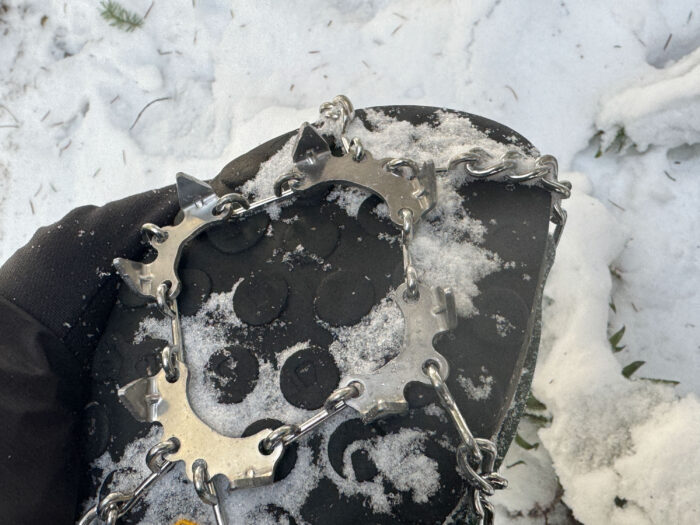
When redesigning the MICROspike harness, Kahtoola killed two birds with one stone by updating the plastic. Not only is this harness lighter, but it’s also more durable. Kahtoola also reinforced the eyelets with an even tougher material, which keeps them from stretching with repeated use. Despite my obsession with pulling these spikes over every boot I own, the harness has remained intact.
The harness also retains its stretchiness down to -22 degrees. Though it certainly took some muscle to do so, I was still able to pull them over my hiking boots on a -20-degree morning without any tearing.
If you’re looking for a spike that will hold up in the coldest of the cold, the Snowline Chainsen Light Spikes have a thinner harness that is easier to stretch. But the thin material means they won’t hold up as well as the MICROspikes with repeated use.
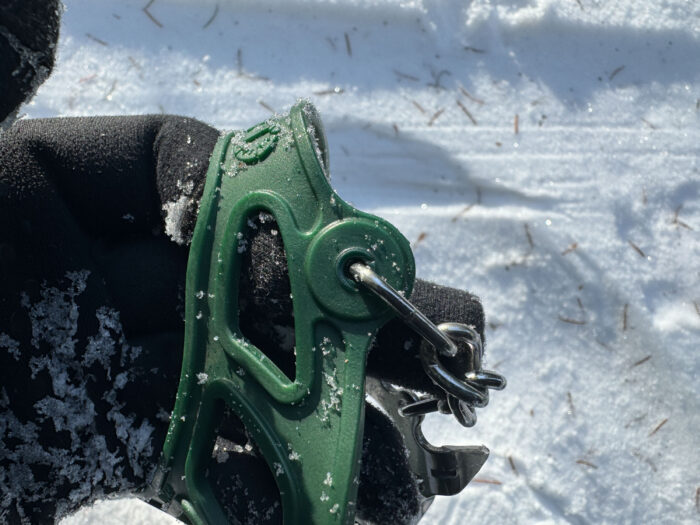
Microspikes vs. Other Winter Traction Devices
Despite my endless adoration of these spikes, there were some times when they fell short. Or, I should say, some terrain. The MICROspikes aren’t the best choice for traversing deep snow and technical terrain.
Snowshoes are a better choice for traveling over deep snow. Their wide footprint distributes your weight over a greater surface area, keeping you afloat in the snow. The MICROspikes’ low profile design won’t keep you from post-holing your way down the trail. If you’re curious about our take on snowshoes, check out the Best Snowshoes of 2024 guide.
Crampons are a safer choice for technical, steep terrain. Compared to the “micro” spikes, the extreme bite and position of crampon spikes are better equipped to help navigate crevassed glaciers or vertical ice. Some microspikes, like the Hillsound Trail Crampon, are a nice middle ground for slightly steeper terrain, but still aren’t a crampon alternative for technical terrain.
Before hopping on the trail, be sure to do your research about the type of terrain you will encounter. Though extremely helpful in icy travel, microspikes are not an end-all and be-all winter traction device.
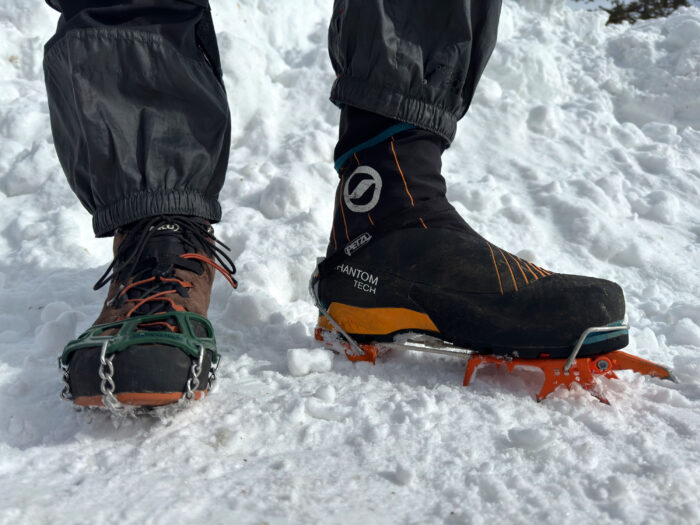
Kahtoola MICROspikes: Conclusion
If you’re anything like me and can’t sit still through the winter blues for the sake of the dry, ice-free summer hikes, the Kahtoola MICROspikes are a must-have piece of gear for your winter setup. Thanks to their mighty bite, they will give you the courage to brave even the darkest and coldest of forests.
Overall, these spikes excel in their performance, fit, and durability. They handle icy and mixed terrain with no issue, giving you extra traction over pesky frozen creek crossings and down polished hard-pack trails. They fit nicely over whatever pair of winter hiking shoes you like best, and they’re designed to last many seasons to come, no matter the mileage you put into them.
Just remember, there’s a reason why these spikes claim the ultimate microspike title — you really can’t beat the OG.
